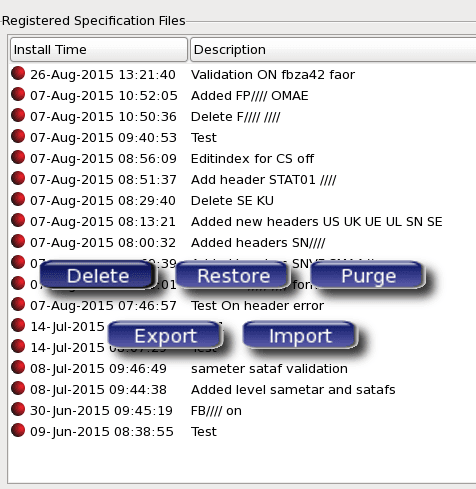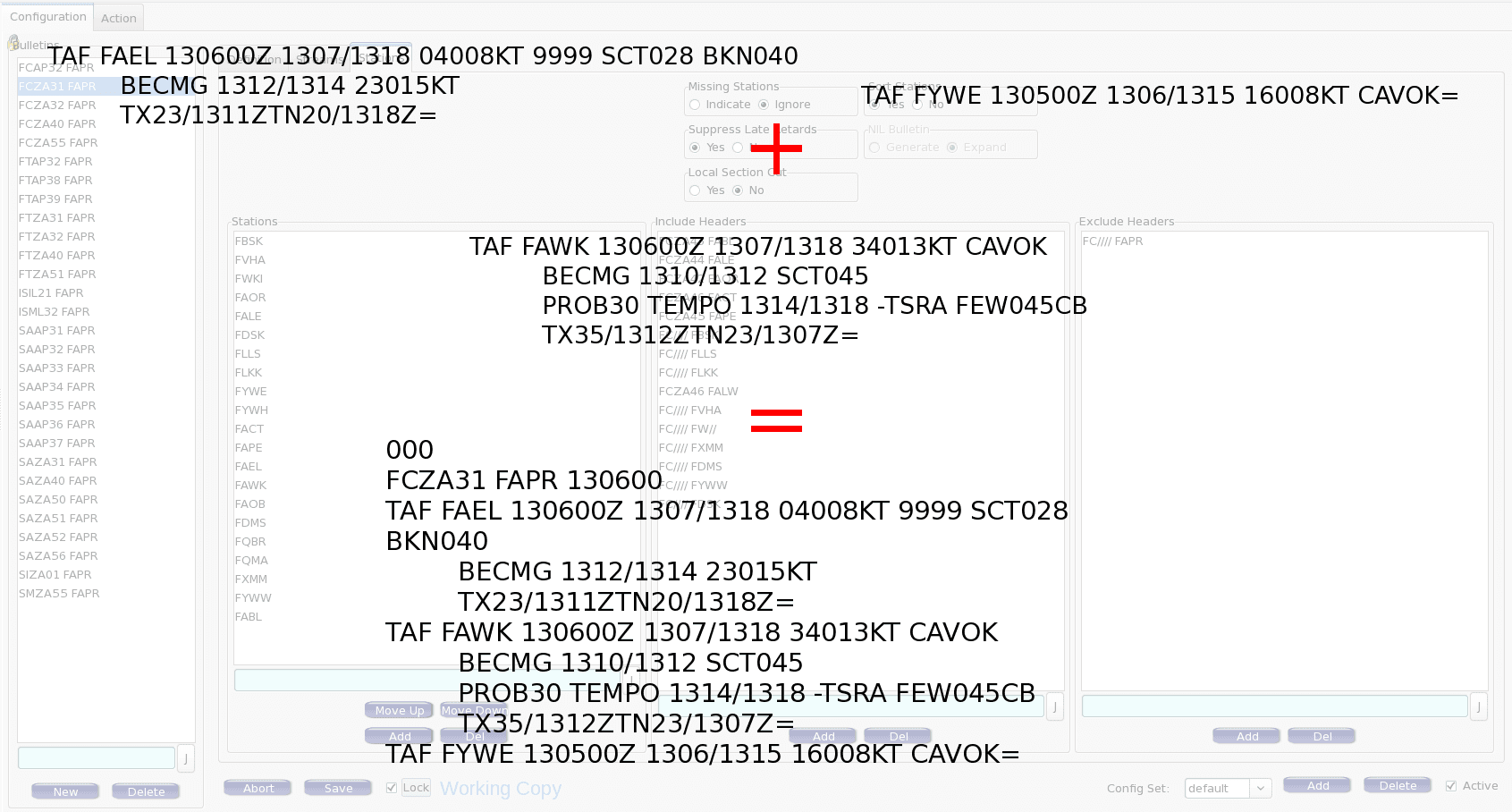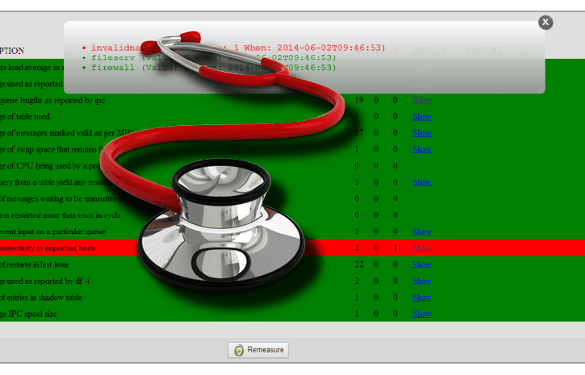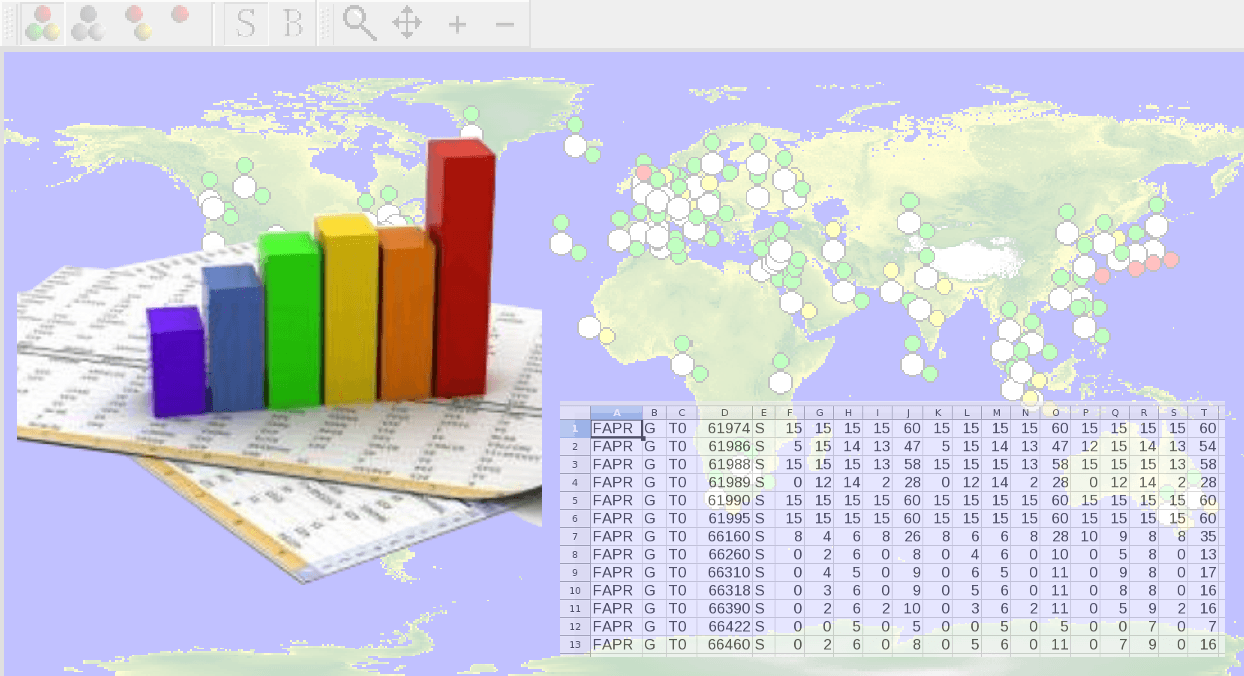The nsMHS product suite comprise a store-and-forward weather message switching system that complies with all the relevant WMO and ICAO standards. It can also concurrently serve as a more general file switching system with routing based on file names instead of WMO abbreviated header lines. It forms the backbone of message handling at numerous institutions around the world and is the system behind the SADIS gateway.


Extensive HMI
An extensive user interface covering all administration, configuration, monitoring and operational facets of the system allows for complete control over the system assets. The user interface can function in either single display mode or dual display mode suitable for comms center deployment.
Configurable Validation and Fixing
Various levels of message validation are available ranging from none at all to format validation to very strict field validation to user supplied validation such as MD5 checksums. Messages marked as invalid upon reception are not routed to outbound destinations, but are instead sent to an error queue from where they can be inspected by human operators. Automated procedural fixing of certain types of messages can be activated as a precursor to human involvement to reduce labor intensive monitoring of error queues.

Extensive Communications
A wide range of supported communication types ensures every major conceivable data exchange scenario can be covered out of the box. Extensible communications endpoints also allow for bespoke in-house scenarios to be covered by virtue of a simple programming API.


Flexible Routing
Routing can be performed on the WMO abbreviated header line of a message or its file name when received as a file from a source with the notion of file names. Content based routing can also be performed whereby the payload is inspected for certain patterns e.g. route all METARs containing hail present weather. AFTN and AMHS routing is greatly simplified by allowing for messages to be addressed to individual stations. The AMHS Directory is consulted for recipient capabilities to ensure configuration does not contain undeliverable items.
Configuration Management
Checkpoints are automatically created upon configuration changes allowing restore to the checkpoint at a later stage. Checkpoints can be exported and imported to facilitate easy migration of configuration from test to pre-operational to operational instances. Compartmentalize configuration into sets with the option to easily switch on/off an entire set which is indispensable when your institution needs to serve as a backup for another institution. Module locking allows for simultaneous use by different operators without race conditions on configuration changes. Configuration changes added to audit logs against the user effecting the change.

Flexible Bulletin Compilation
Bulletins can be compiled from station data sourced from TAC, TDCF or WXXM. Every aspect of bulletin creation such as compilation times, retarded issuance, NIL report and local section handling is controllable by the user. Bulletins can also be compiled from complete source messages such as the concatenation of regional long term forecasts into a single national long term forecast bulletin.

Powerfull Message Conversion
Effortless image file format conversion allows for insito changing of an input message’s image file format to another format with the option of retaining or discarding the original message. For non-image messages, scripted conversion allows for infinite freedom as to the transformation of data as it travels through the system e.g. (de)compression of messages. Insito conversion of TAC/TDCF/WXXM allows for gradual migration to newer formats until in-house systems are ready.


Comprehensive Health Monitoring
The NetSys monitoring solution forms part of nsMHS and contains a wide array of bespoke monitors to gain insight into every corner of the system. Alarm conditions can be acknowledged for lengthy repairs and re-measured to test corrective action. Criticality of monitored aspects can be varied according to the logged-in role to adapt to assigned functions of personnel. Custom actions can be tied to individual alarm conditions to attempt automatic restoration to the normal condition. Alternatively integrate the NetSys MIB into a local SNMP monitoring capability.
Realtime and Non-Realtime Monitoring
Create flexible real-time monitors to count occurrences of messages at specific times and react automatically in various ways, such as sending a notification message to offenders or executing a custom script. Allow the comms center to visually see late stations on a map. Generate non real-time AGM, IWM and SAM monitoring reports with the option of automatic upload to the GTS WWW servers.


Extensible and Programmable
The NetSys nsMHS Integrators Manual documents the various APIs and configuration files which allow for the system to be integrated completely into local procedures and practices.
- Use the XMLRPC API to submit bulletins compiled by in-house created software directly into nsMHS or query messages based on filters
- Create scripts to react to various signals generated by the system onto its IPC BUS
- Create scripts to react to specific alarms or events
- Trigger actions based on file system events
- Create custom validators for messages
- Create custom content routers for messages
- Custom data collection/dissemination through scripts
- Create custom message converters for input or output insito translation
- Create custom monitors for local aspects not covered by NetSys monitoring
- Integrate monitoring into local procedures
- Create own test cases for automated test harness
COTS Hardware or Virtualization
Deploy the system on your own choice of hardware or virtual platform. Numerous customers have made the jump from bare metal to virtual servers with no problems experienced whatsoever. The freedom to procure hardware of your choice in your own country has the added benefit of proper warranty and service by local chapters of the respective vendors. Flexibility on CPU and storage allows for deployment to suit every budget.

The system builds only on the tried and tested Linux, PostgreSQL, Apache and Linux High Availability Open Source Software that stood the test of time. Combined with the nsMHS the system’s reliability and performance exceeds expectations at numerous deployments. Having multiple customers stay loyal to this system uninterrupted in excess of 20 years as it evolved to its present version attests to its credentials as the go-to system to get the job done.
Log Tracking and Inspection
All alarms and events are uniquely numbered system-wide. Create log filters based on role to control log visibility to users based on their assigned function within the system. Tag logs with in-house method of operation instructions to allow users to easily locate remedial action. Acknowledged logs are immediately visible across all instances of log viewers. Search through log history based on filters pertaining to various attributes of logs such as pattern matches to log text, log number or severity.


High Availability
We have customers that have run a single instance of nsMHS in excess of 5 years on their in-house virtual platform without a single minute of unplanned outages. Should redundancy at the software level be non-negotiable, nsMHS deploys a live/standby high availability cluster with private 10Gb CAT6e or OM3 fibre for low-level synchronous replication of storage and exchange of high availability meta-data. This network has minimal chance of failure and ensures that the customer LAN never gets saturated by any redundancy traffic. Networking equipment can be duplicated up to the desired level of redundancy.
High Performance
The system benefits from 25 years worth of optimizations and enhancements to see it capable of ingesting 1000+ messages per second in laboratory tests on a dual redundant highly available cluster. Uptime for a nsMHS dual redundant cluster is rated in excess of 99.99%. The system is self-maintaining with respect to the life-cycle of processes and disk storage. It has been assured to AL4 for aviation deployments.

Traffic Simulator
A traffic simulator allows for fine grained control over feeding fabricated data into a system under test to verify that deployment characteristics will meet operational expectations.

High Security
The system employs a role based security model with finely-grained control over access to various aspects of the system. There is the option to use FreeIPA as the user store. VLANs are used to compartmentalize the various network access classes and a set of ready-made IP tables rules are available in the event of no enterprise firewalling on-site.


Remote Support
Our exclusive use of the multi-user Unix OS to host nsMHS deployments allows for seamless remote support by NetSys Customer Services through VPN, SSH, ISDN or reverse security tunnels not easily matched by non-Unix based systems.
Compliant Industry Standards


















